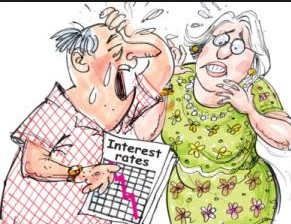Kenneth Rogoff writes: How should one understand the disconnect between the new highs reached by global equity indices and the new depths plumbed by real interest rates worldwide? Several competing explanations attempt to reconcile these trends, and getting it right is essential for calibrating monetary and fiscal policy appropriately.
The most popular explanations downplay risk factors in a way that can be dangerously misleading. For example, the “secular stagnation” theory claims that low interest rates tell the true story. The global economy is suffering from a chronic demand shortfall, which can be remedied through sustained growth in government spending.
According to this view, soaring stock markets merely reflect low discounting of future profits. Moreover, labor’s share of profits seems to have fallen markedly in recent decades across the world’s eight largest economies, with the possible exception of the United Kingdom. Conversely, capital’s share of profits has been rising, which of course raises the value of equities (though, stock prices have continued to rise in countries like the US and the UK where labor shares have begun at least a cyclical recovery, and where interest-rate hikes may soon be on the horizon).
Although high-yielding government investments in education and infrastructure are especially justified today, the idea that demand permanently constrains supply in a significant way is dubious.
Another possible explanation of low interest rates is financial repression. The European Central Bank and the Bank of Japan, like the Federal Reserve before them, are gluttonously buying bonds. At the same time, a host of new regulations to promote financial stability are forcing banks, pension funds, and insurance companies to stock up on government securities. Thus, today’s low interest rates are more a reflection of distortions in financial markets than of low growth expectations.
Proponents of the financial repression explanation essentially view low interest rates as a hidden tax on bondholders, who receive a lower interest rate than they would otherwise.
The financial repression tax is not nearly as progressive as a more general wealth tax would be, because lower-income households typically have a smaller share of their assets in equities.
Other factors are contributing to today’s ultra-low interest-rate environment as well. Adverse demographics and declining labor-supply growth in most advanced economies are undeniably important. The puzzle, though, is that this trend has played out in a very gradual and predictable way, whereas the decline in interest rates has been more rapid and somewhat unexpected (certainly by central banks).
Though bonds are hardly a perfect hedge against geopolitical risks, they typically beat stocks (except, perhaps, in cases of global conflagration, when both fare badly). In recent work with Carmen and Vincent Reinhart, we show that even relatively minor shifts in disaster risk – say, a rise from a normal 2-3% to 3-4% – can lead to a massive decline in global real interest rates, even taking them well into negative territory.
If the government has superior information and analysis, and correctly assesses that public fear is not justified, then of course it makes sense to issue more debt.
If, on the other hand, the public is basically right about heightened disaster risks, the policy issues become much more complex. The problem is that the government likely faces high costs if a disaster strikes, which implies a high option value to preserving fiscal space for when it is most needed.
Heightened public concern about the risk of future economic catastrophe in the wake of the financial crisis is still playing an important role, reinforced by lingering fragility in the eurozone and rising instability in emerging markets. This makes the public understandably more cautious. But if the risks that might help explain the price trends for stocks and bonds are real, policymakers, too, should be careful not to throw caution to the wind.

